The blue whale (Balaenoptera musculus) is not only the largest creature alive today, but it is quite likely the largest creature ever to live. A mature blue whale can measure up to 100 feet long and weigh more than 350,000 pounds! That is nearly 20 times heavier than a Tyrannosaurus Rex. The record for a blue whale, documented in 1947 before commercial whaling was banned, was an astonishing 418,878 pounds!
This behemoth spends its entire life in the water. Blue whales are found in every ocean on the planet except the Arctic Ocean. Interestingly, this gargantuan whale feeds on tiny organisms. Blue whales eat mainly krill and small crustaceans. This requires the whale to dive from 300 feet to more than 1,600 feet below the surface.
These dives take a long time, but just how long can a blue whale hold its breath?
Blue whales can hold their breath underwater for as long as 90 minutes.
This is the length of a full soccer match (excluding stoppage time, but you get the point). Let’s explore how these mammoth whales can remain submerged for up to an hour and a half.

The blue whale is the largest creature on the planet.
©Andrew Sutton/Shutterstock.com
The Blue Whale’s Lungs
Although whales live their entire lives in the water, they are not fish. Whales are mammals, meaning they must breathe oxygen just like all other mammals, including humans.
Since the blue whale is the world’s largest creature, it is not surprising that it also has the largest lung capacity. The blue whale’s lungs have a combined total capacity of around 5,000 liters of air. For comparison, the typical adult human’s total lung capacity is about six liters.
Whales breathe through blowholes situated on top of their heads. Toothed whales, such as killer whales and sperm whales, have one blowhole. Baleen whales, such as blue whales, have two blowholes. Other baleen whales include humpback, bowhead, and fin whales.
When the blue whale surfaces to breathe, it first exhales stale air out of its blowholes. This air is expelled at speeds of over 370 miles per hour! The whale exhales up to 90 percent of its lung capacity in these events. The whale then rapidly refills its lungs with fresh air before diving back below the surface. Powerful sphincter muscles hold the whale’s blowholes closed while underwater. Otherwise, since the blowholes lead directly to the lungs, the whale would drown.
But, while the blue whale’s lung capacity is enormous, that is not the entire reason this mammoth whale can remain underwater for up to 90 minutes.
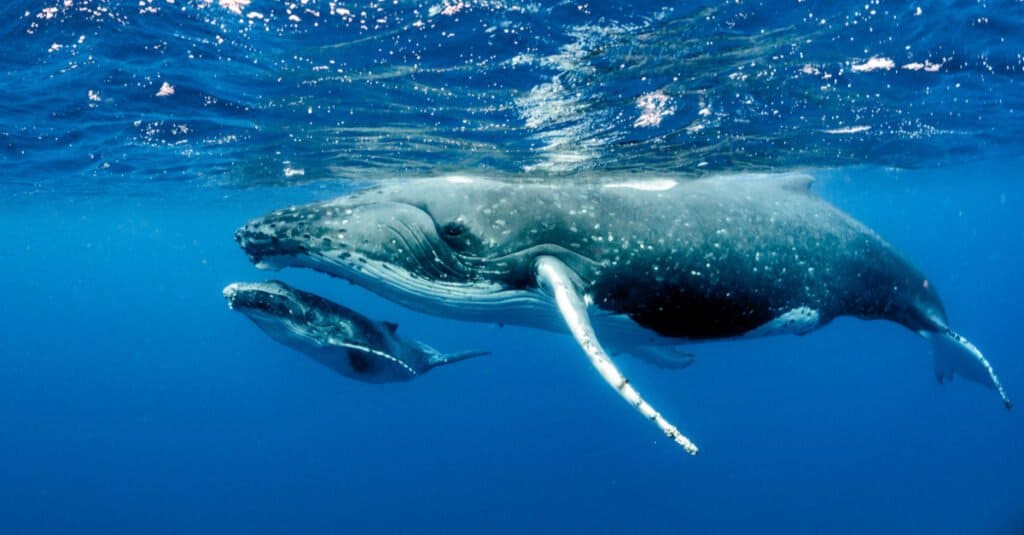
Like blue whales, humpback whales also have two blowholes.
©Imagine Earth Photography/Shutterstock.com
Respiratory Efficiency
Human beings typically breathe from ten to twenty times per minute while at rest. Still, only about five percent of the oxygen from each breath is actually absorbed into the bloodstream.
A blue whale’s respiratory system is far more efficient. Up to 90 percent of inhaled oxygen is absorbed into the blue whale’s bloodstream.
Whales store oxygen in myoglobin. Almost all mammals have this oxygen-storing protein, but cetaceans have far higher concentrations of myoglobin. This allows them to store much more oxygen from each breath than terrestrial mammals.
It is so efficient that biochemists are studying the myoglobin proteins of whales. These scientists believe these proteins could be the key to creating synthetic blood that could be used to save the lives of trauma patients.
Blue whales also slow their heart rate as they dive. Some of their arteries constrict, slowing blood flow to certain organs. Only the heart, brain, and swimming muscles receive blood flow during deep dives. This lessens the need for oxygen, allowing each breath to sustain the mammal for up to 90 minutes between breaths.
Blue whales also have a much higher tolerance for carbon dioxide (CO2) than other mammals. Their ability to endure a higher buildup of CO2 further extends the time between needed breaths.
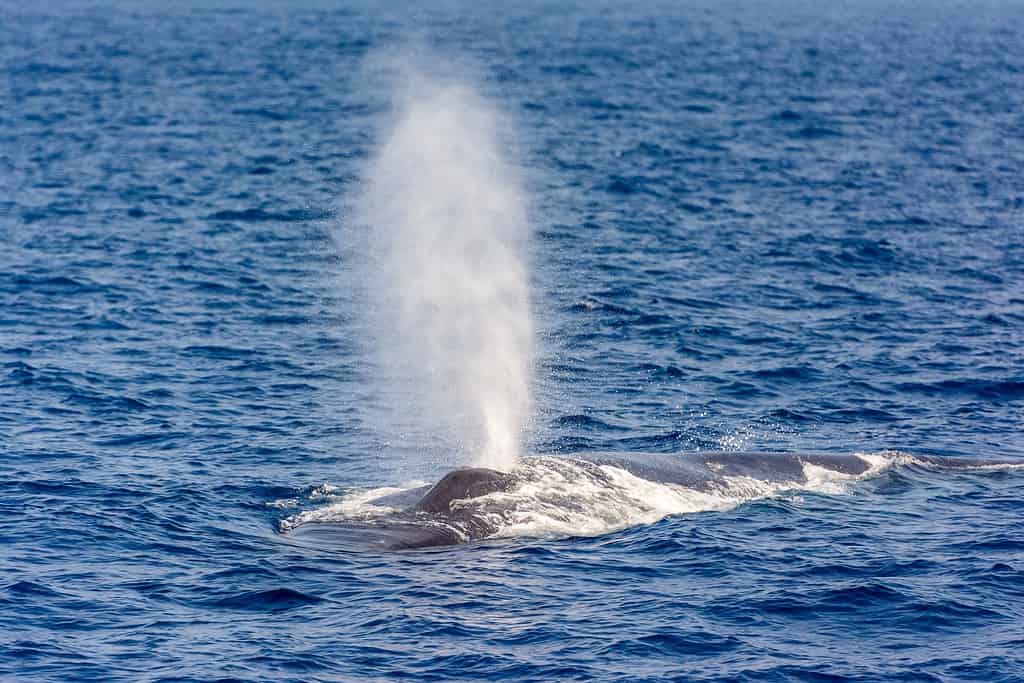
A blue whale’s spout can be expelled at speeds over 370 miles per hour!
©iStock.com/Wirestock
Conscious Breathing
Humans, and all other terrestrial mammals, breathe involuntarily. Unless these mammals make a conscious effort to hold their breath, they will breathe automatically. You may be thinking about breathing right now because you are reading about it, but that is not the norm. The vast majority of the time, you breathe without giving it any thought whatsoever.
Whales are different, though. They are voluntary or conscious breathers. In other words, they have to decide to breathe. They make a decision to swim to the surface for a breath. Without this voluntary, conscious decision, they would drown.

Terrestrial mammals, including humans and cats, are able to fall into a deep sleep state because they are involuntary breathers.
©Lapina/Shutterstock.com
But Don’t All Mammals Sleep?
What about sleep, though? How can whales be conscious breathers if they, like all mammals, require sleep? Whales do indeed sleep, but not in the same ways as many other mammals, humans included.
You can’t think about breathing when you are fully asleep. But, since humans are involuntary breathers, you also don’t need to think about it. Your body inhales and exhales automatically.
Whales and dolphins can’t enter a fully unconscious state of sleep because they are conscious breathers. Instead, one-half of their brains sleep while the other half remains awake. This allows the animals to rest but also continue to breathe.
This fascinating adaptation was confirmed when scientists used electrodes to measure electricity levels in the brains of dolphins. The electroencephalograms (EEGs) revealed that when a dolphin is in a sleep cycle, half of its brain sleeps while the other half remains active.
Whales and dolphins typically sleep near the surface, making it easier and faster for them to breathe. It is sometimes known as “logging,” where a dolphin or whale floats at or near the surface with minimal movement.
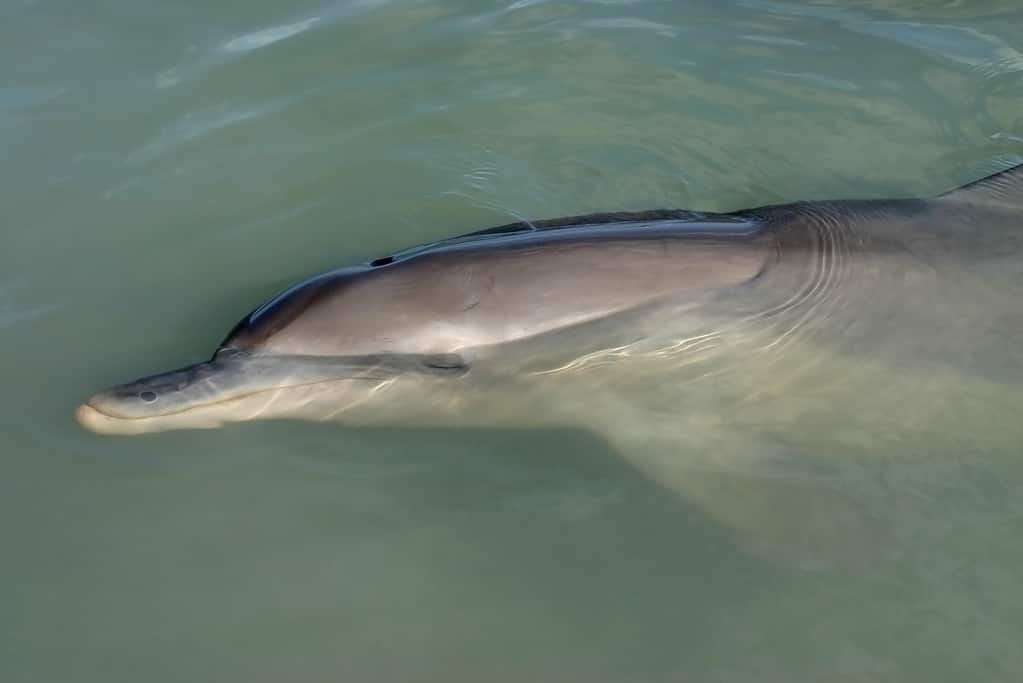
Dolphins, as well as whales, often rest near the surface to make breathing easier.
©iStock.com/urosr
Longest Whale Dive
While blue whales have the largest lung capacity of any creature on earth, they do not hold the record for the longest-recorded whale dive. That title belongs to the Cuvier’s beaked whale.
In 2020, a Cuvier’s beaked whale dive of more than three hours was documented. It is also the deepest diving whale currently known. Dives over 9,800 feet deep have been recorded. It seems that this whale often pushes itself to the very brink of what it can endure, yet the reasons behind this behavior remain a mystery.
Ironically, and tragically, this deep-diving whale is one of the most frequently spotted beached whales. Again, the reasons for this phenomenon are not fully known.
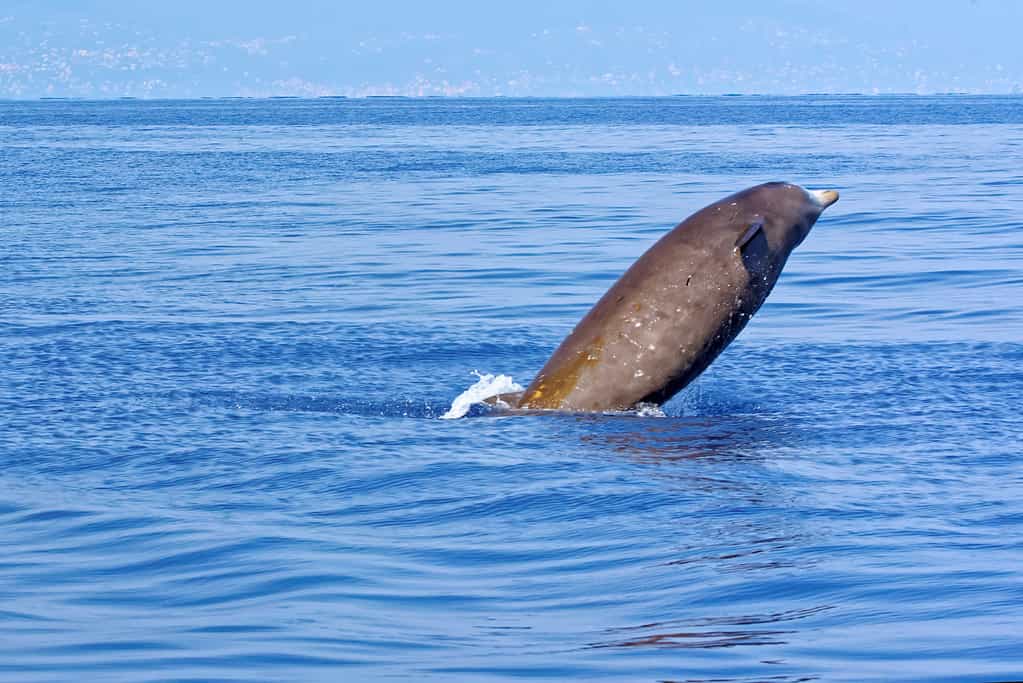
The Cuvier’s beaked whale holds the record for the longest whale dive ever documented.
©iStock.com/HeitiPaves
Do Whales Ever Drown?
A conscious-breathing mammal that lives its entire life in the ocean sounds like a recipe for disaster, but whales almost never drown.
The very few whale drownings that do occur nearly always involve newborn calves. Whales give birth underwater. Calves need to surface immediately after birth. The air hitting their skin is what triggers their brain to open their blowholes and take that first critical breath. Occasionally calves do not make it to the surface for their first breath.
The only other real examples of whale drowning involve trauma, such as getting caught up in a fishing net or some other barrier that prevents the whale from reaching the surface.
Other than these outlier examples, whales do not drown. They do not have gills like fish, but their bodies are perfectly designed for life at sea while still breathing the same air that we do.
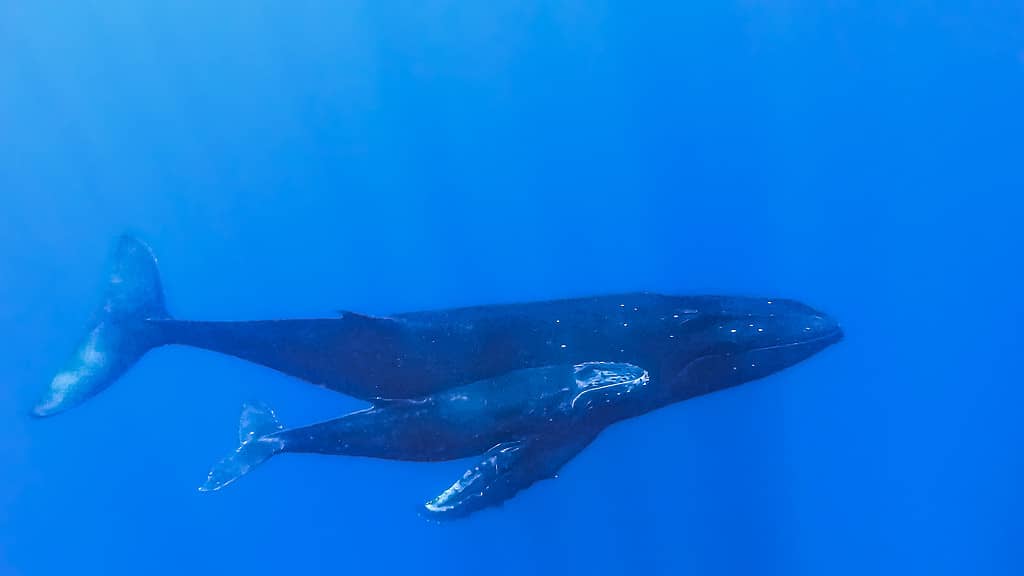
As long as a blue whale calf is able to reach the surface for its first breath, the odds of a natural drowning for the whale are practically zero.
©iStock.com/Grilleau Nicolas
The photo featured at the top of this post is © iStock.com/Wirestock
Thank you for reading! Have some feedback for us? Contact the AZ Animals editorial team.






